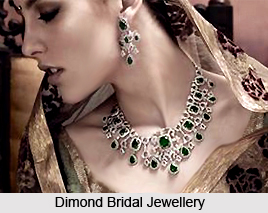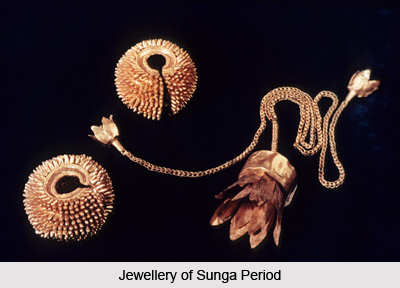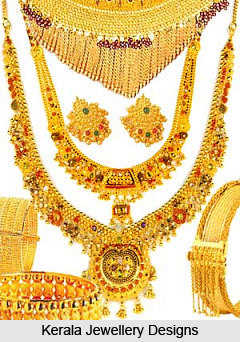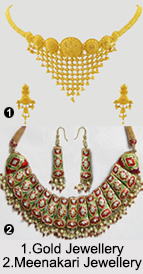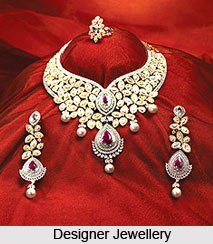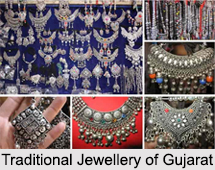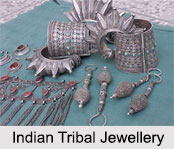 Indian Tribal Jewellery is a traditional form of Indian jewellery and is known for its rustic flavour. India is a country, blessed and endowed with a richtribal culture. The tribes of India have preserved the ancient crafts and arts of India with their ethnic pieces of jewellery. Ornaments used by the tribes stand out in a crowd because of its rustic and earthy flavour. They make jewellery from the indigenous items that are available locally. Moreover the jewellery they prepare exhibit their artistic skill in a profound manner. The appeal of the tribal jewellery is mainly due to its chunky and unrefined look.
Indian Tribal Jewellery is a traditional form of Indian jewellery and is known for its rustic flavour. India is a country, blessed and endowed with a richtribal culture. The tribes of India have preserved the ancient crafts and arts of India with their ethnic pieces of jewellery. Ornaments used by the tribes stand out in a crowd because of its rustic and earthy flavour. They make jewellery from the indigenous items that are available locally. Moreover the jewellery they prepare exhibit their artistic skill in a profound manner. The appeal of the tribal jewellery is mainly due to its chunky and unrefined look.
Features of Indian Tribal Jewellery
Tribal Jewellery communicates a lot regarding the status of the individual who wears it, since these represent the socio-cultural traditions of those tribal groups. The materials which they commonly use to prepare the wonderful pieces of jewellery are wood, shells, bone, clay and some crude metals. Sometimes they also use hairs of animals in a painted form. The shapes which they use are basic and very close to the ethnic Indian art.
Indian Tribal Jewellery of Different Regions
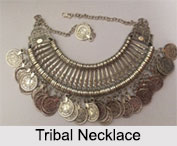 Various tribes in India use different types of jewellery to adorn themselves. Sometimes it is found that may be they are scantily clothed but they have ample jewellery on their bodies. Even tattoo is an attractive form of jewellery created by some tribal groups.
Various tribes in India use different types of jewellery to adorn themselves. Sometimes it is found that may be they are scantily clothed but they have ample jewellery on their bodies. Even tattoo is an attractive form of jewellery created by some tribal groups.
The tribe of Bastar District in Madhya Pradesh uses a lot of grass, beads and cane to prepare their unique jewellery. Traditional ornaments made out of silver, wood, peacock feathers, glass, copperand wild flowers are also commonly used by the tribes of Bastar. Sometimes the women of the Bastar tribe are seen wearing necklaces made out of one rupee coin It portrays the culture of Bastar District.
Similarly, the Banjara Tribe is a group of nomadic people in Rajasthan. The use of colourful, heavy jewellery is very popular among them. They make ornaments and a variety of belts which are heavily embossed with metal-mesh, coins, beads, shells and chains.
The Tribes of Meghalaya like the Khasi, Jaintia and the Garo Tribes are known for their exclusive creation of jewellery. The Khasi and the Jaintia tribes mainly use thick red coral bead necklaces and the Garo on the other hand are identified with thread strung thin fluted stems of glass. The Bhutias of Sikkim use the traditional gold to make jewellery. Along with gold they also use metals like silver, zee stones, turquoiseand coral.
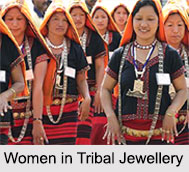 The Tribes of Arunachal Pradeshon the other hand use ivory, gold, bone, brass, silver and gold for making their beautiful pieces of ornaments. They also use blue feathers from birds, green wings of beetles and beads to decorate their ornaments. The Wancho Tribe of Arunachal Pradesh wear earrings made of glass bead, cane, reed, bamboo and wild seeds whereas the Gallong women wear heavy iron rings in their ears which are coiled several times. They also wear necklaces made from metal coins and leather belts which are heavily studded with beads.
The Tribes of Arunachal Pradeshon the other hand use ivory, gold, bone, brass, silver and gold for making their beautiful pieces of ornaments. They also use blue feathers from birds, green wings of beetles and beads to decorate their ornaments. The Wancho Tribe of Arunachal Pradesh wear earrings made of glass bead, cane, reed, bamboo and wild seeds whereas the Gallong women wear heavy iron rings in their ears which are coiled several times. They also wear necklaces made from metal coins and leather belts which are heavily studded with beads.
Indian Tribal Jewellery for Men
However, jewelleries are not only worn by women, certain ornaments are also worn only by the men from particular sections of a given tribe. Among the eastern Rengma Nagas, the men wear flowers in their ears, red being the favourite colour. The men of the Angami Tribe of Nagaland wear green fern or other foliage in their hair knots.
The tribal jewellery is the illustrations of skilled Indian dexterity even among the backward tribes and at the same time the jewellery used by the tribal people are a heritage to the Indian land. The increasing popularity of Tribal jewelleries has made them wardrobe staples these days.


